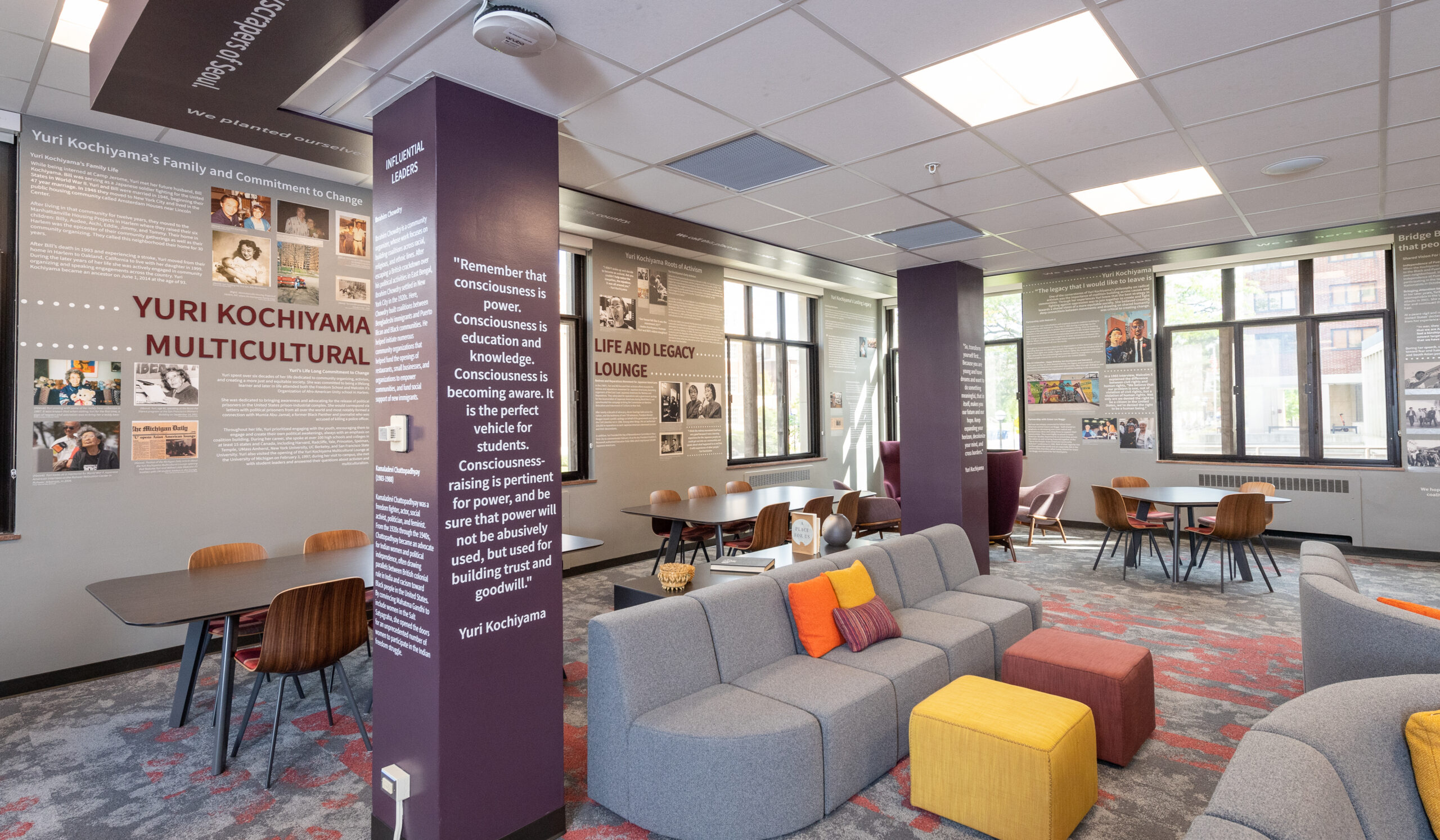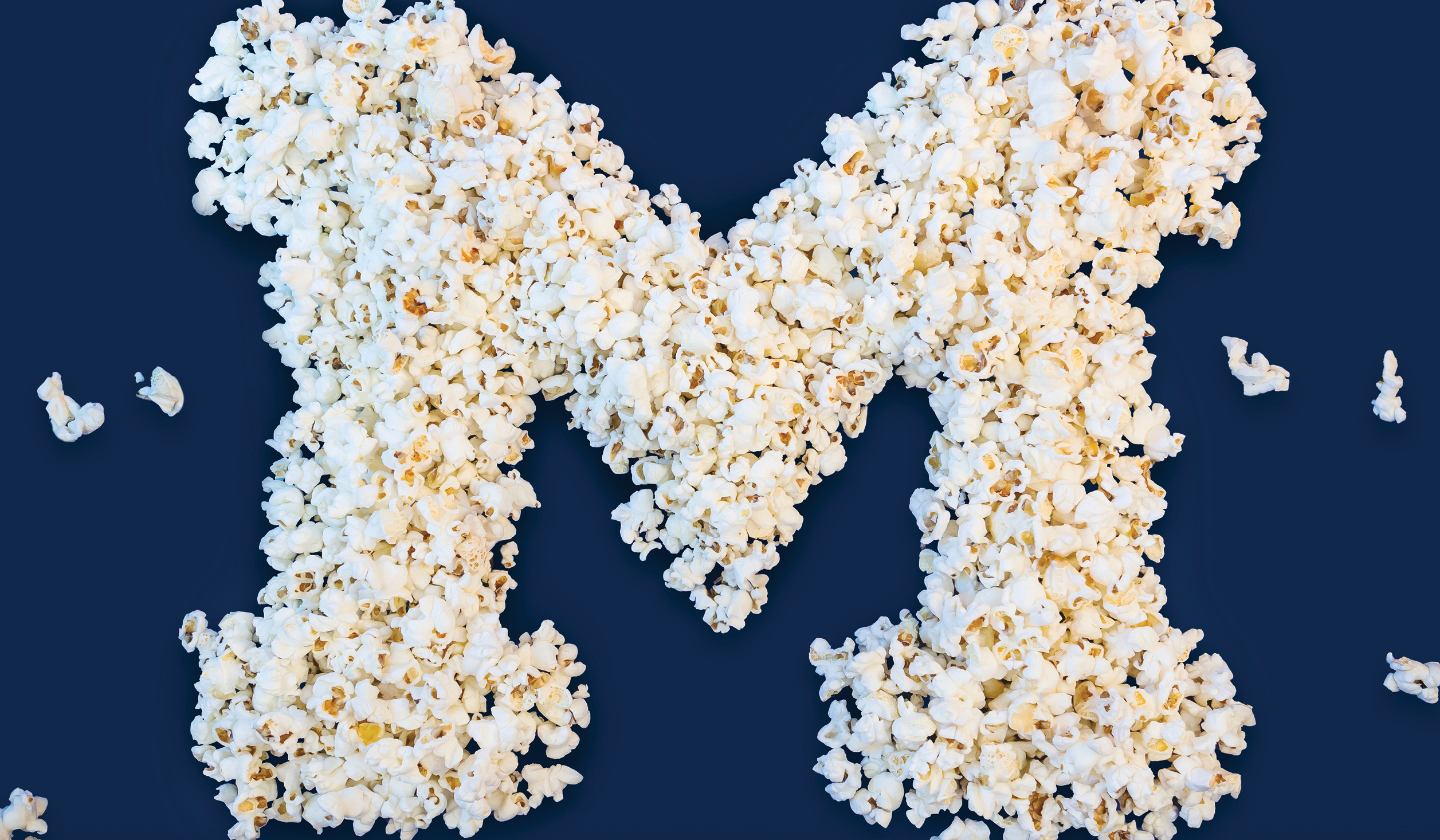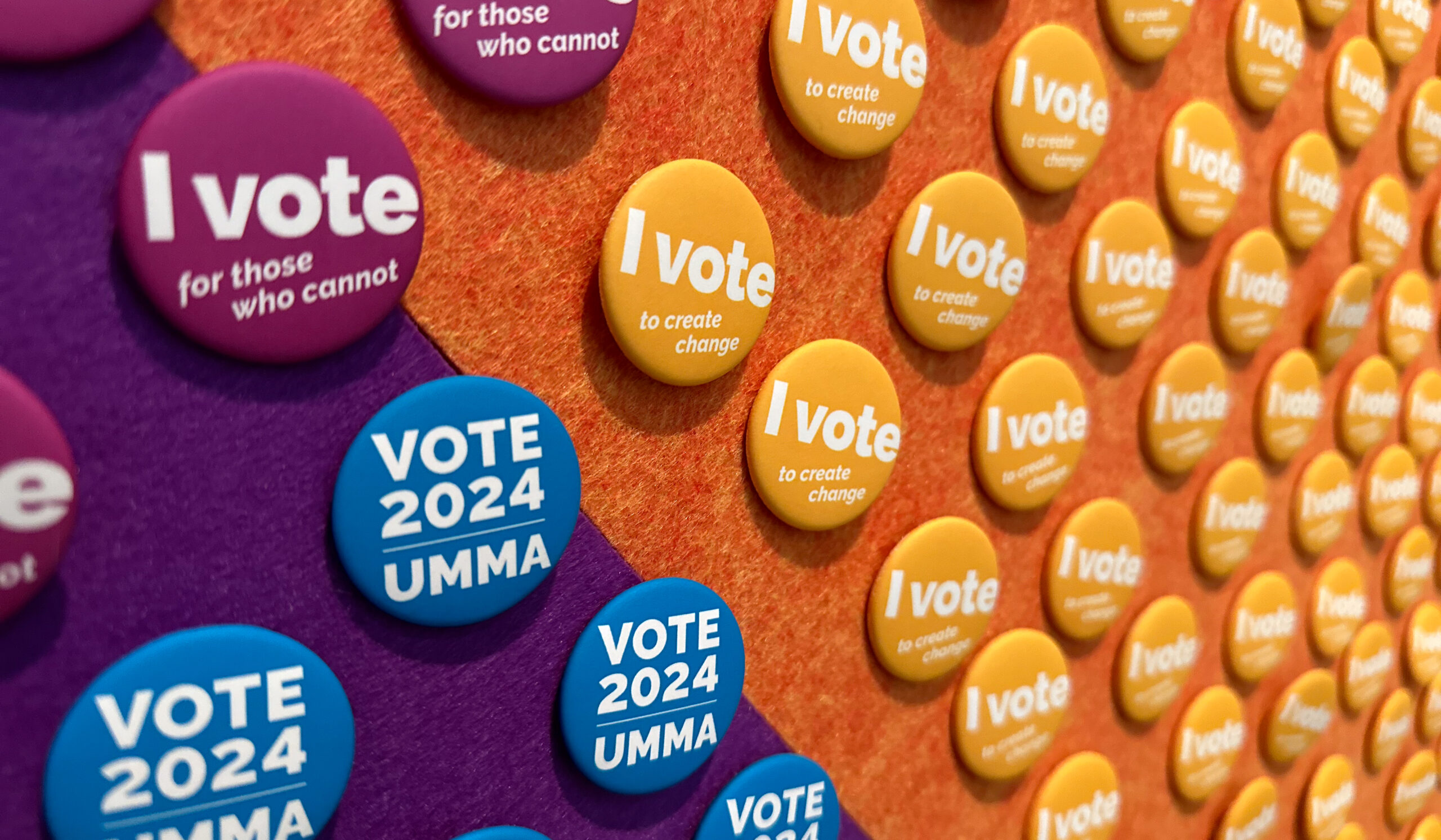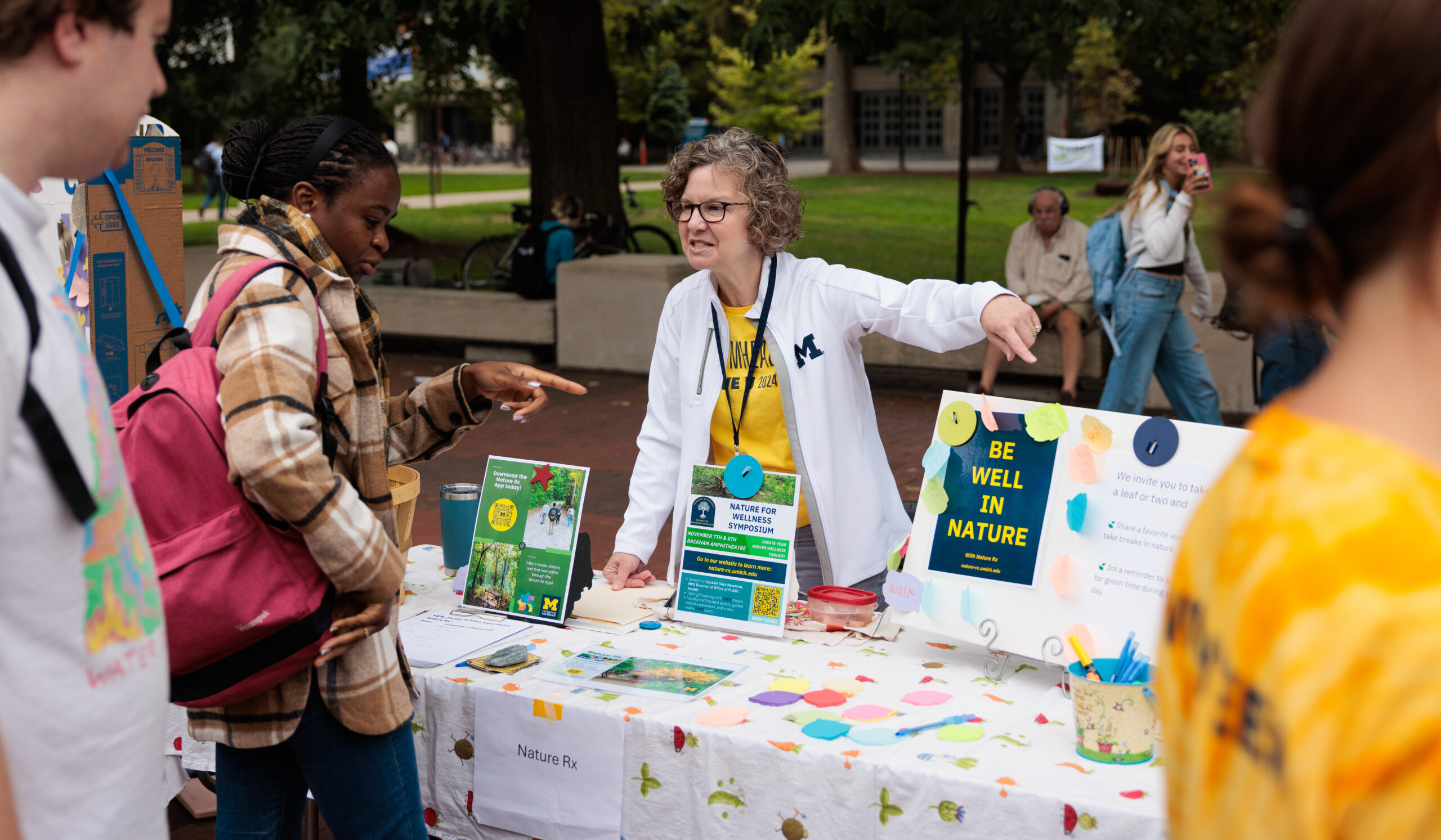As the Black Action Movement (BAM) rose on campus in the fall of 1969, Black students began to demand representation, an increase in Black student enrollment, and better programs and community spaces to support their activism work. As part of its response, the University created gathering rooms in residence halls that featured graphics, photographs on the walls, and shelves filled with memorabilia, relevant books, and more.
The Abeng Minority Culture Lounge, which highlights artwork and colors representing the pan-African movement, was U-M’s first multicultural community space and opened in East Quadrangle in 1971.
A year later, the Afro American Lounge opened in South Quad, when BAM participants feared there was nowhere safe for them to meet on campus. Art by Jon Onye Lockard, who helped found U-M’s department of Afromerican and African studies, and other artifacts reflecting Black culture and history can be found throughout the lounge.
Now, as part of the Multicultural Lounge Program, there are 17 total multicultural and minority culture lounges in U-M’s residence halls and the program is the first one of its kind in the U.S.
“What’s great about these spaces is [they show that] the University is listening,” says Elizabeth Beckett, the senior program manager of inclusive spaces in the diversity and inclusion office of Michigan Housing.
As student activism continued, the University broadened the scope of these lounges to include other marginalized and identity groups. There are lounges named after Edward Said, an Arab American professor who helped create the field of post-colonial studies; Grace Lee Boggs, a Chinese American author, social activist, philosopher, and feminist; Vicky Barner, a Native American woman who advocated locally at U-M; and Yuri Kochiyama, who advocated for reparations for Japanese American survivors of the internment camps. Other icons of Black history, including Martin Luther King Jr. and Rosa Parks, also have lounges dedicated to them.
The lounges are in the process of being renovated and updated, and the University continues to listen to alumni who were involved in establishing the spaces and current U-M students.
“It’s a way for us to continue to bring students into the conversation to explore their identities and other identities,” Beckett says.
Collaborating with students can lead to essential changes. In the César Chávez lounge, for instance, materials on display were written in English with Spanish translations, but when students from the lounge’s legacy organization asked that Spanish be the first language, the change was made. Some lounges were previously located on a residential floor but have been relocated to more accessible areas.
Renovations in several lounges include replacing furniture that’s worn and adding graphic materials to “create more awareness and accessibility and to do more intentional storytelling,” Beckett says.
All the lounges are open daily for any student to use for studying and social activity.
The Connector, Housing’s multicultural engagement center, celebrates and promotes diversity, equity, and inclusion. Through programs and events, students can come together to engage with different perspectives, identities, and experiences.
Davi Napoleon, ’66, MA’68, is a freelance writer and theater historian.





